5 Famous Artists Who Were Migrants and Other Stories
As long as there have been artists, there have been migrant artists. Like anyone else, they’ve left their homeland and traveled abroad for many...
Catriona Miller 18 December 2024
It is a common opinion that if you would like to start a career in arts, you should begin as early as possible. But talent knows no boundaries, and age is not any different. Morris Hirshfield, who began to paint at 65 and managed to make his path as an artist, is considered one of the most critically acclaimed self-taught artists of the 20th century. For seven years before his death, he created a mere 78 works, and we should only wish that, if he could have started earlier, he would have painted more of his amazing images!
You may think that I’ve exaggerated a bit by saying that a self-taught painter had a massive career. But famous artists like Pablo Picasso, Piet Mondrian, Marcel Duchamp, Alberto Giacometti, and André Breton were among those who admired his work. Peggy Guggenheim included his pieces in her stunning collection. Even Clement Greenberg, a highly influential art critic of the mid-20th century, was a fan. And impressively, Alfred Barr, the founding director of the Museum of Modern Art, gave Hirshfield, a Jewish immigrant with limited education and no high-society connections, a solo show in 1943. Barr might have regretted that, but we will come to this.
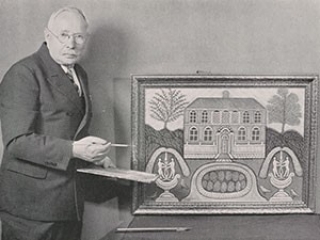
Morris Hirshfield, 1940, from They Taught Themselves: American Primitive Painters of the 20th Century, 1942.
Modern artists like Mondrian and Picasso found Hirshfield’s bold use of color and his way of making shapes simpler and flatter attractive. They felt his style had much in common with their experiments in making art less realistic and more abstract. The Surrealists perceived Hirshfield as someone being on a similar artistic journey. The curators of the famous First Papers of Surrealism, an exhibition of international Surrealist painters in New York in 1942, André Breton and Marcel Duchamp, included the work of both well-known Surrealists and only one man from outside the genre: Morris Hirshfield.
And most importantly, Hirshfield painted animals. Cats mostly, but not only. And once you see one of his works, you will immediately recognize his unforgettable style.
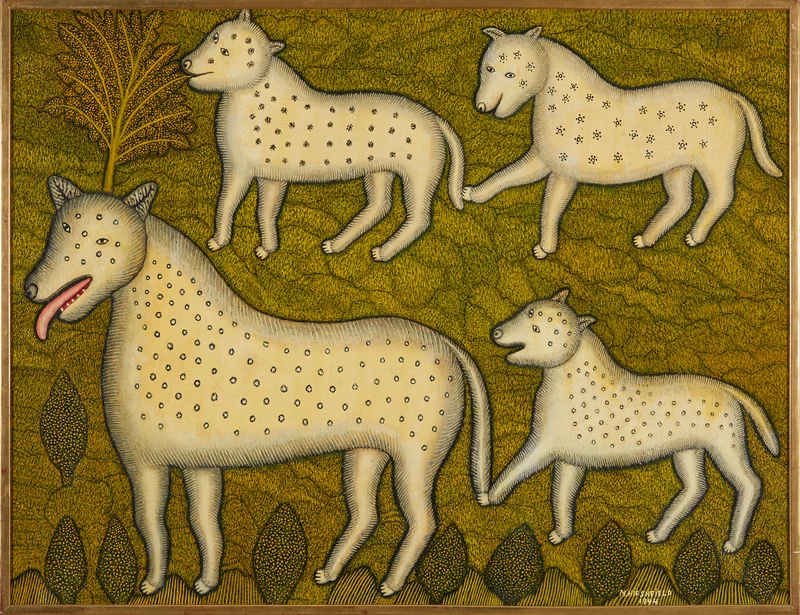
Morris Hirshfield, Dog and Pups, 1944, private collection.
There was no indication that Morris Hirshfield would become an artist. Moishe (his original name) Hirshfield was born in Poland in 1872 but emigrated to the United States at eighteen. He was poor, did not speak English, and changed his name to Morris. At the turn of the century, he found employment at a women’s coat factory, which was also a common form of work among Jewish immigrants in New York City.
But he made his way, and later, he founded a business with his brother; first manufacturing women’s coats, then women’s slippers. His company, E-Z Walk, at first produced orthopedic devices such as ankle straighteners and arch supports before releasing a wildly popular line of embellished boudoir slippers designed by Hirshfield, which sold well even during the Great Depression. He retired in 1935 due to failing health. It was a classic New York emigrant story. But two years later, Hirshfield started to paint, and then he met Sidney Janis.
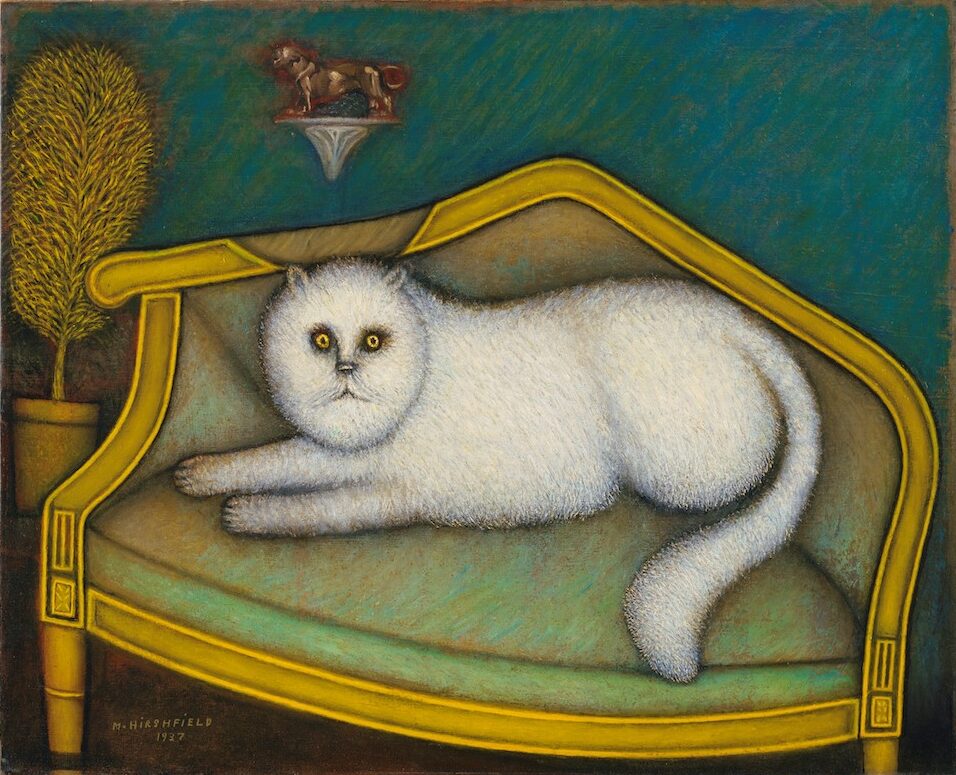
Morris Hirshfield, Angora Cat, 1937-1939, Museum of Modern Art, New York City, NY, USA.
Sidney Janis was a successful businessman in the men’s shirt world who decided to say goodbye to the clothing industry for good. He really got into art and learned all about it on his own, just like Hirshfield did. As he had done well enough to retire early, he dived into his true love – collecting and curating modern art. He even ended up being one of the top art dealers of the 20th century. His knack for spotting great self-taught artists started when he bought Henri Rousseau’s The Dream back in 1934. Fast forward to 1939, the year he retired, Janis stumbled upon a couple of Morris Hirshfield’s paintings in the Hudson Walker Gallery in New York. The owner of the gallery wasn’t too keen on them and had them turned against the wall. Janis was there hunting for hidden gems for a show he was putting together at the Museum of Modern Art (MoMA). Just as he was about to leave, he spotted these tucked-away treasures of Hirshfield.
One was a painting of an Angora Cat, which immediately caught Janis’s eye. He described it as a “strangely compelling creature… sitting possessively upon a remarkable couch.” Spoiler alert – the painting is now in MoMA’s collection.
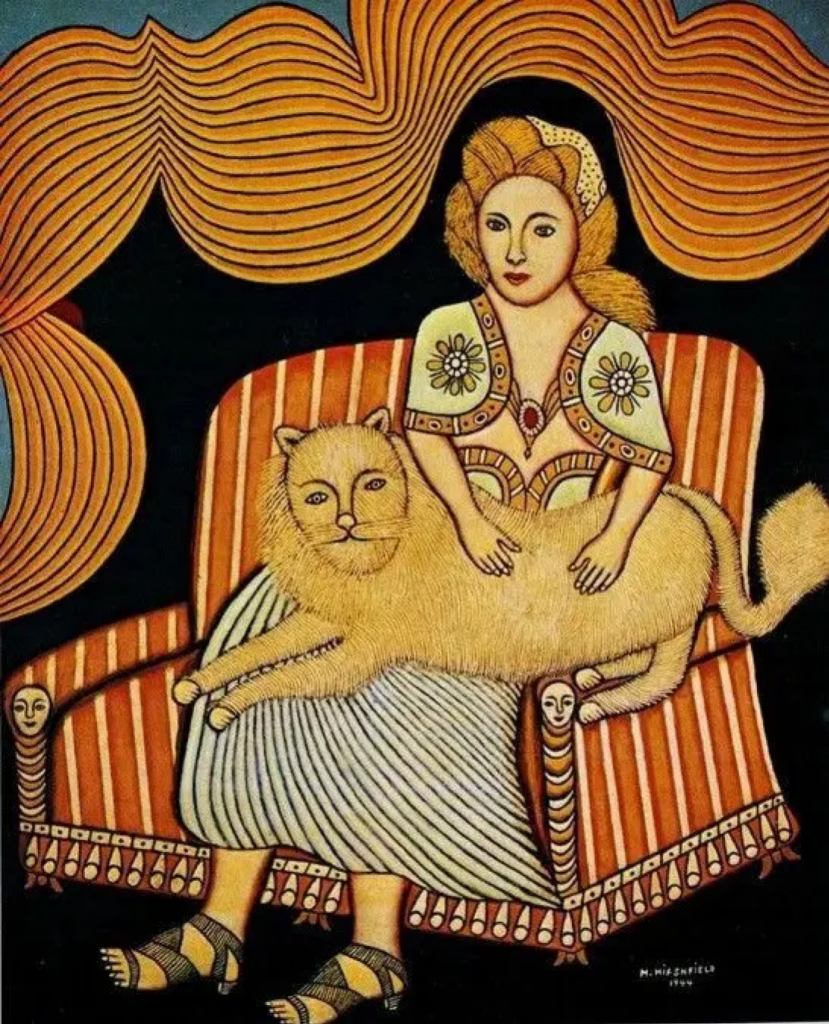
Morris Hirshfield, Girl with Angora Cat, 1944.
Janis stepped up as Morris Hirshfield’s main cheerleader, taking his art to museums and collectors all over the place. He even went on a tour around Europe with Hirshfield’s rolled-up paintings, showing them off to big-name artists like Picasso and Giacometti. He also included some of Hirshfield’s work in a 1939 exhibition named Contemporary Unknown American Painters and in a 1942 book called They Taught Themselves: American Primitive Painters of the 20th Century.
The big moment for Hirshfield came in 1943 with a solo show at the Museum of Modern Art, put together by Adolph Barr. This show had all 30 of Hirshfield’s paintings and got a lot of attention. But not all of it was positive – some critics weren’t too impressed. One even joked about how Hirshfield always painted women with two left feet (it’s true, he did!), and another called him clumsy. This show caused a bit of a stir at MoMA too. The president of MoMA, already not happy with Barr’s way of running things and raising money, used this exhibition as proof that Barr wasn’t doing a great job and ended up firing him.
The artist justified painting two left feet by saying it was because the factory always sewed samples of new slippers on the left foot.
Morris Hirshfield died of a heart attack in 1946 at age 74. During his brief artistic career (of 7 years only!), he had 15 exhibitions, including four solo shows, most arranged through Janis. But afterward, his art was marginalized by restrictive art historical narratives, and his mesmerizing art was hidden in museum storage spaces.
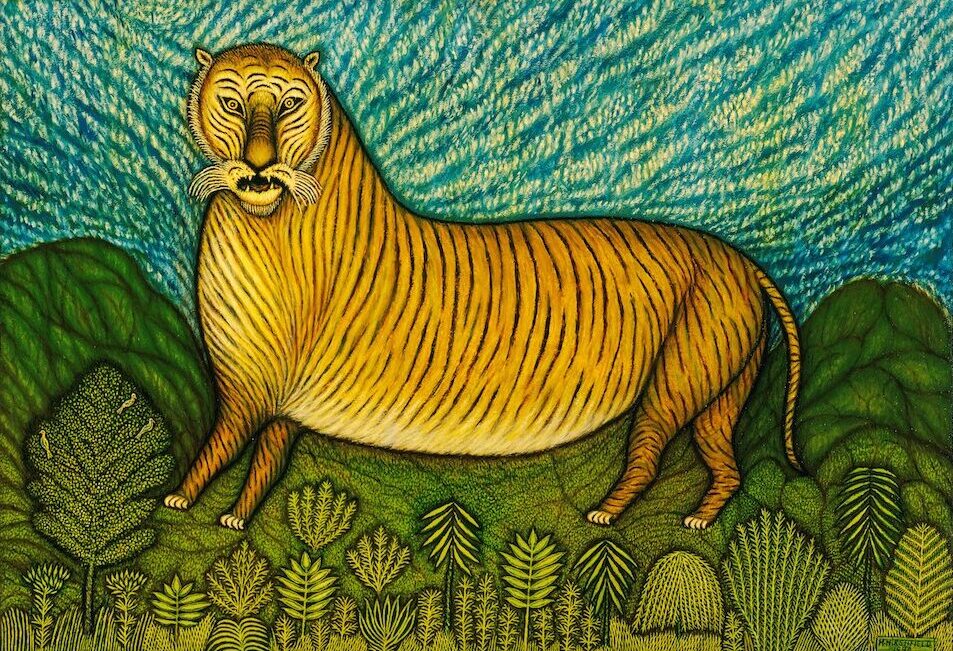
Morris Hirshfield, Tiger, 1940, Museum of Modern Art, New York City, NY, USA.
Hirshfield started his painting journey in his own bedroom, which he turned into a little studio. Not wanting to spend extra on canvas, he cleverly reused two fancy paintings he already had from better days. He just took them off his apartment walls and painted over them. His first piece, Angora Cat, took him two years to finish. He put a lot of care into it, adding layer upon layer with lots of tiny brush strokes.
It’s pretty obvious that Hirshfield had a thing for cats. He painted both house cats and wild ones in his very own, special way. The Tiger is often remembered as one of his most striking animal paintings. It really grabs your attention with its bright, bold patterns – like the way he painted the striped sky blending into the thick, lush greenery. And let’s not forget about the tiger’s intense stare that adds a whole lot of drama to the picture.
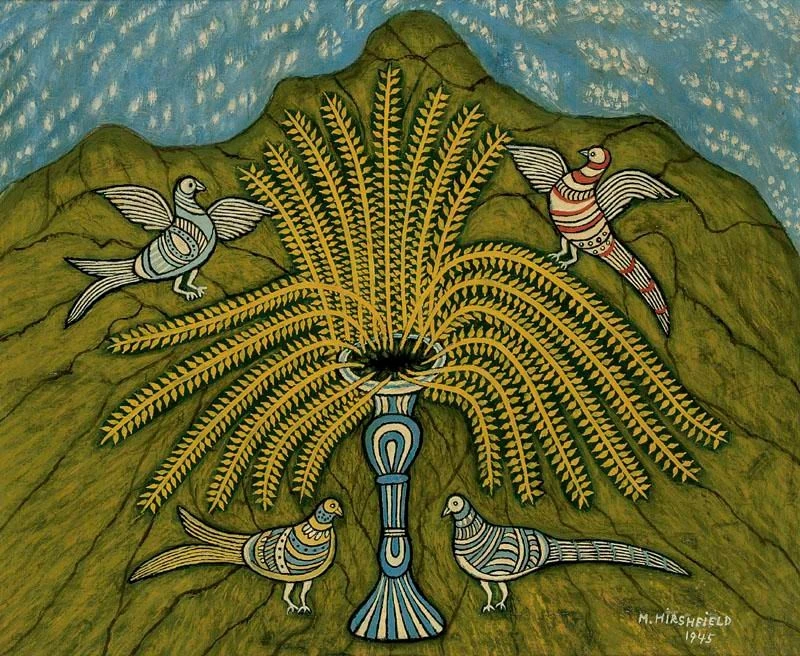
Morris Hirshfield, Garden Stand and Birds, 1945, private collection.
Hirshfield used a mix of real-life models, postcards, his own memory, and a dash of imagination to create his paintings. People have always loved how he used decorative patterns and symmetrical designs in his work. These might have been influenced by his previous job working with fabrics for things like curtains, furniture, and clothes. Some people even say his paintings remind them of old, fancy manuscript illustrations and have a bit of a surreal, dream-like quality to them.
Thanks to the exhibition held in 2022-2023 in the American Folk Art Museum in New York, the art history world was reminded of Morris Hirshfield’s beasts and his other wondrous works. Despite facing criticism and skepticism in his time, Hirshfield’s legacy inspires and resonates with audiences today.
And remember: it is never too late to start your painting career!
DailyArt Magazine needs your support. Every contribution, however big or small, is very valuable for our future. Thanks to it, we will be able to sustain and grow the Magazine. Thank you for your help!